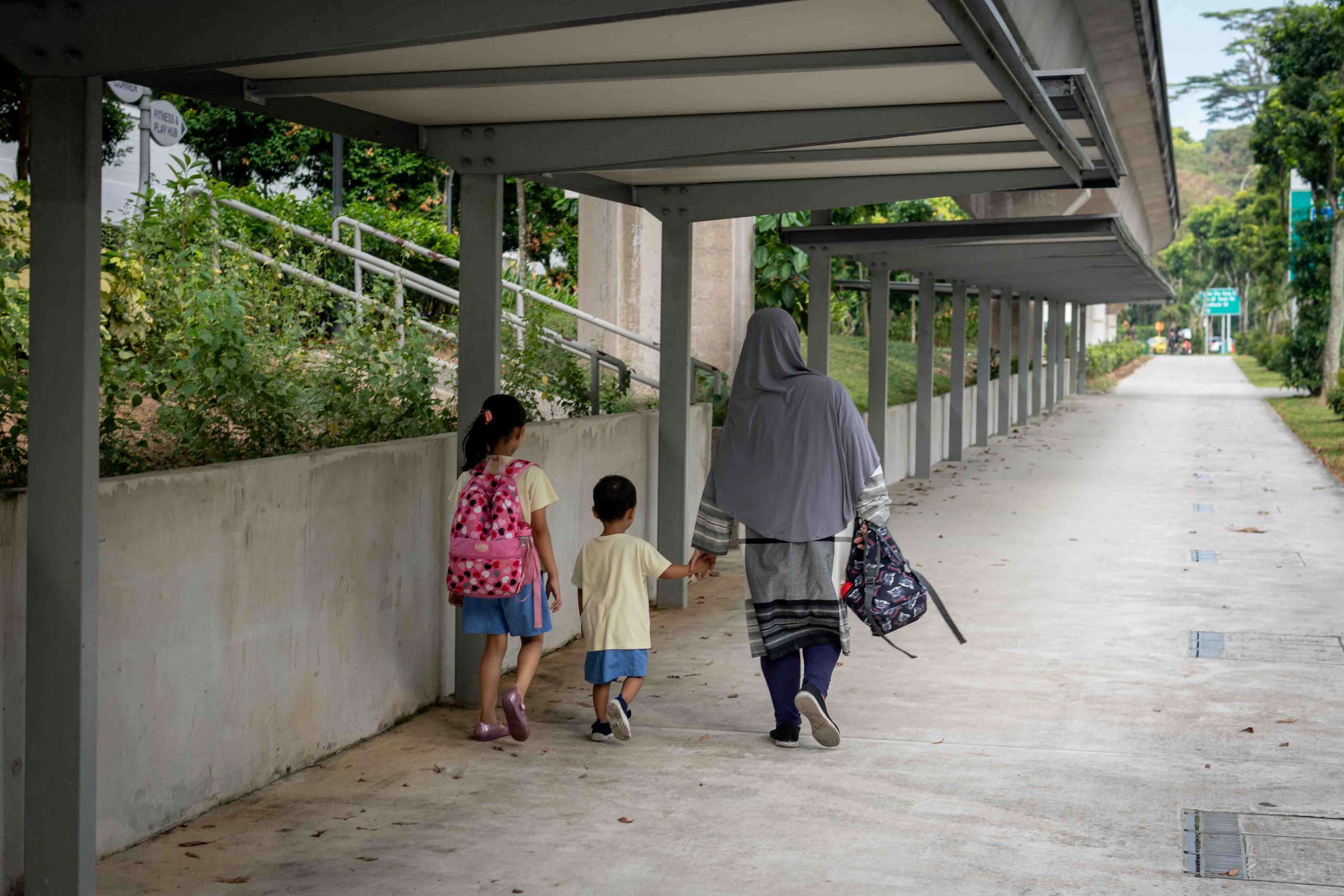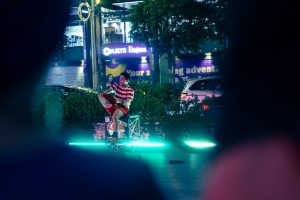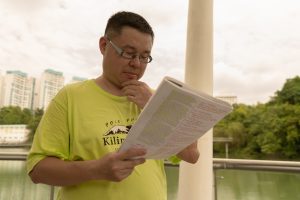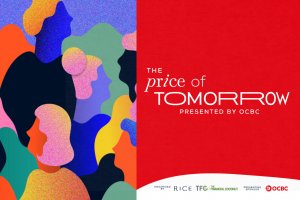Having visited more than 100 Singapore schools, best-selling author Neil Humphreys meets more talented writers than him… until the exam pressures take hold. For Everychild.sg, he offers his take on why Singaporean students will be better creators with fewer exams and smaller classes.
Top image: Mei Hui Lim / RICE file photo
Singapore’s teachers are heroes. They greet me on a Monday morning, wide-eyed, enthusiastic and ready to conquer another working week.
I am not wide-eyed. It is 7 AM, and my voice is still in bed, leaving me sounding like a cross between Thanos and a frog.
But the teachers are grateful for my presence, which is both humbling and embarrassing. My job is to make a school assembly laugh for half an hour and hopefully inspire students to read and write more and explore their latent creativity.
I have it easy. When I’m done, the heroes take over.
Occasionally, I wander along the school corridors and watch the heroes at work, teaching large classes, the size of which I still struggle to grasp. I grew up on an East London council estate, raised by a single mother and sent to a neighbourhood school with a dubious reputation.
Singapore has the kind of cash reserves that most nations can only dream of. Why were my class sizes smaller?
In Singapore, indefatigable teachers often wear those Burger King headsets because their audiences are too big, and their voices must be preserved. They may be talking about Pythagoras, but they look like they’re asking the kids to upsize their meals.
Why are there 40 children in a class in a wealthy country with declining birth rates? It’s neither a criticism nor a challenge, just a sincere enquiry. I do not know the answer.
Vanishing Points
But the heroic work continues—and succeeds—according to recent statistics. In December, the Programme for International Student Assessment (Pisa) reported that Singapore tops the ranks for mathematics, science and reading among 15-year-olds—a wonderful achievement and a testament to our tireless educators.
Both sets of tireless educators, in fact.
About five years ago, I sat with a lovely group of English teachers at a well-known girls’ school, and the subject of tuition inevitably popped up.
Not all parents wanted to send their children for tuition classes, they said. The belief in extra-curricular activities, non-academic pursuits and a little breathing space was real. But the pressure eventually came from children, falling behind in class.
In other words, every one of the 40 children in class can theoretically get from A to B in the academic year. In reality, they need a little external support to plug the gaps, hence the $1.4 billion tuition industry in Singapore. (Perhaps the figure of 40 is less significant than 1.4 billion, as one helps to offset the other).

And at that moment, there is a risk of our children disappearing, literally and creatively. My nephew spotted the literal vanishing point.
He’s spending a semester at a local university and recently asked about the nation’s missing children. He rarely saw any in the evenings, so I tracked them down for him.
In the movies, Indiana Jones ventured into the deepest temples of doom to locate missing children. In Singapore, I just took my nephew to a tuition centre at Compass One.
They poured in. They poured out. Deep into the night. In fleeting moments, they gathered outside, struggling with outsized backpacks like upturned turtles on a beach, knowing that in less than 12 hours, they’d be doing this all over again outside their school gates.
Exam-itis
But this isn’t a lazy takedown of tuition centres. On the contrary, they provide employment for many Singaporeans and foreign residents, including myself when I first arrived. Most of my first book is essentially recalling my fabulous escapades as a naïve but very happy speech and drama teacher working for the Juliet McCully Speech Training Centre.
In essence, the kids were educating me, teaching me everything from where the best hawker centres were to basic Singlish (a K1 class affectionately called me Mr Cuckoo Bird, until I found out what a cuckoo bird described in local slang).
The concern with tuition centres is one of objective. What are they for? To nurture creativity or to plug gaps in the school curriculum and pass exams?
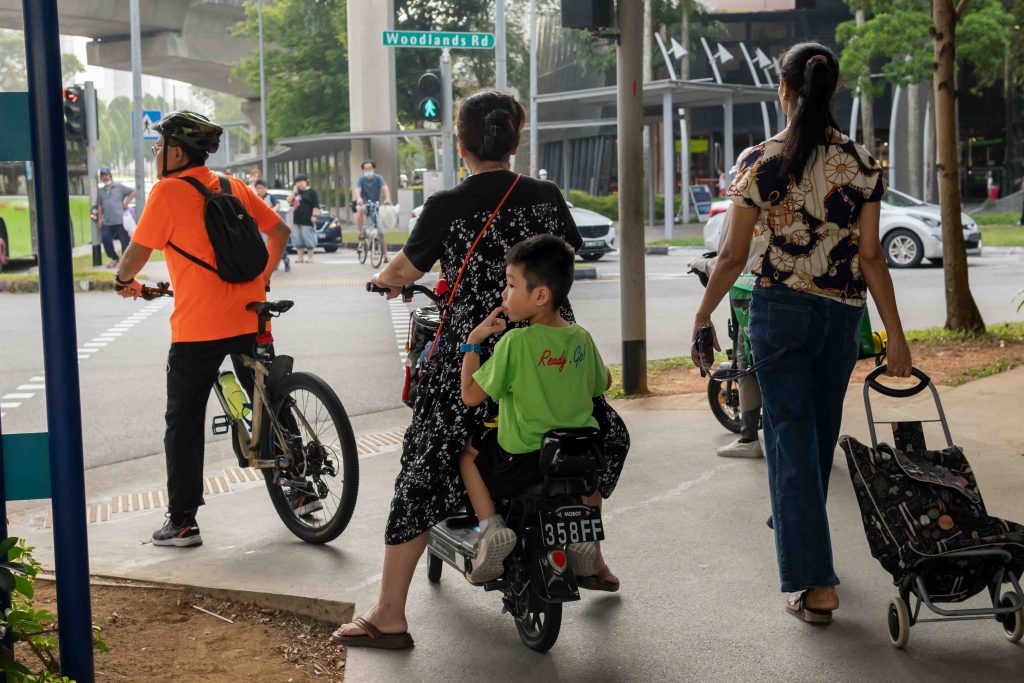
There are two examples that I always throw up at this point. Around 2012, I was waiting for my daughter’s Tien Hsia Mandarin class to finish—yes, this kiasu parent knows how to plug gaps, too—when I wandered over to a neighbouring English tuition centre. In the window, a model essay was proudly framed in bright yellow construction paper, with the centre gushing about the student’s outstanding exam results.
Being an irritating contrarian, I would not send my daughter to that tuition centre because of the model essay. It was too perfect, too cold, too cynical in its grammatical precision. It lacked the very human qualities that get any half-decent work published. It sounded like AI.
Similarly, a personal tutor recently posted a ‘before and after’ essay of one of his students on Facebook: the raw version and the edited version, post-tuition. You can guess where I’m going with this.
The raw version was superior, in my view, because it was the authentic voice of an 11-year-old. The work was naïve and simple. But it was quirky and original.
It offered the reader a visceral experience. The other sounded like AI.

In that moment, there is the risk of our children disappearing, creatively. Whether it’s mimicking a model essay or memorising memorisation techniques, the cramming, rote-learning and stacks of mock exams are about as useful in the age of ChatGPT as me trying to predict the weather. We have apps for that stuff now.
And I see it. I literally see it in their faces at dozens of schools across the country. From P1 to P4, broadly speaking, they are funny and feisty, cheeky and curious, quick-witted and often capable of producing original work that I could not match at their age.
At author talks and book fairs, students pass me their short stories, homemade comics and illustrations. They can be eclectic and esoteric, clever and irreverent and all those other uniquely human qualities that AI may not be able to emulate (hopefully).
And then they hurtle towards P6 and exam-itis takes hold. Bright young creators often become weary, late-night crammers and the pressures are only amplified in secondary school. It can be a dispiriting process to witness.
Read Widely, Read Well

One of the accepted ‘norms’ within education and publishing circles is that Singaporean teenagers “don’t read”.
It’s practically a given. In their early years, they read for pleasure. They write, too. Then PSLE approaches. Then, the creative exploration comes to a juddering halt. Feeding our intellectual curiosities, whatever they are, gives way to an endless gorging on test papers. Exams come first. Results are everything.
And at the risk of overreaching, there’s a possible correlation between a national exam obsession and an underlying lack of respect for intellectual property.
When knowledge and creativity are portrayed as a means to an end—the end being to pass exams and get a job that pays well—rather than a fulfilling end itself, then why should we read, write or create for pleasure? What’s the point? Where’s the economic value in that? Why respect the creative process when we can just mimic it, use it for a bit and move on?
(Incidentally, when it comes to IP in the arts, we have some of the highest piracy rates in the world. Just saying.)
In other words, we do not really study to be creative. We study to make money. And that might have been a sensible, utilitarian approach for a young Singapore shaping a knowledge-based economy. But as AI takes over most of that knowledge-based grunt work, maybe those raw, quirky, risk-taking voices may need to be nurtured and prioritised now.
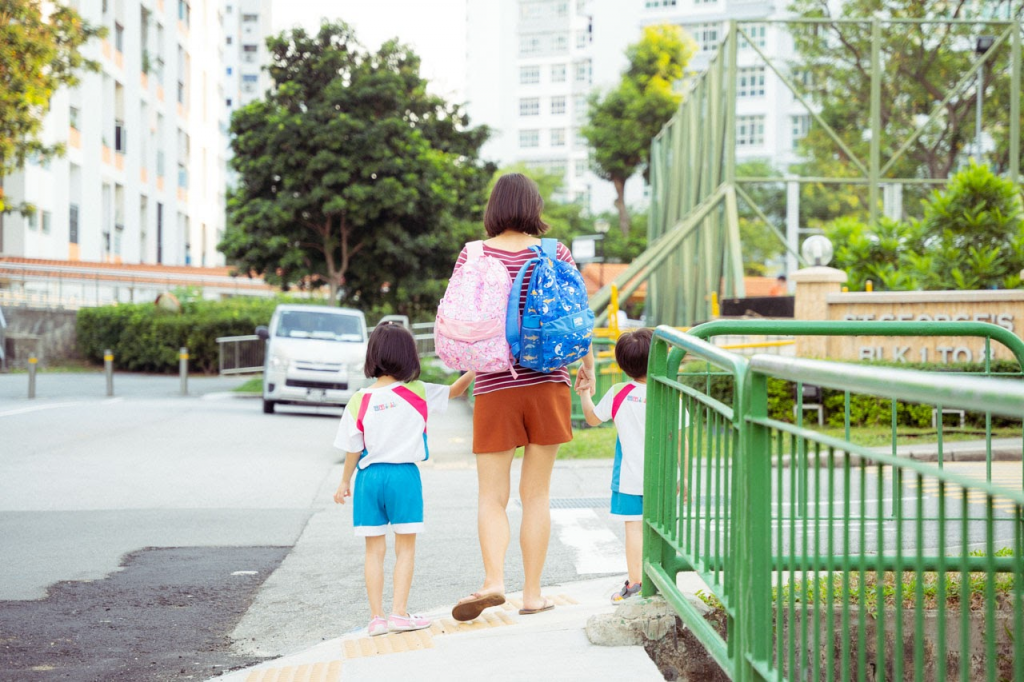
Imagine those voices speaking up in smaller classes and gaining confidence with fewer exams. Imagine teachers having the time and space to work on the social-emotional development of each individual rather than having to power through a curriculum and rely on tuition centres to fill the gaps. And imagine tuition centres providing opportunities for students to learn what they want rather than what they need to pass an exam.
Yes, it all sounds a bit John Lennon, and I’m one pedagogical fantasy away from singing all this at a white piano, but Singapore really does have the raw talent to potentially produce a Pulitzer Prize winner.
I’ve met these kids at more than a hundred schools. I’ve read their work. They have the creative skill sets to deal with the existential threat of AI. They also have wonderful teachers.
They all just need a bit of room, in every sense, to do their best work.

